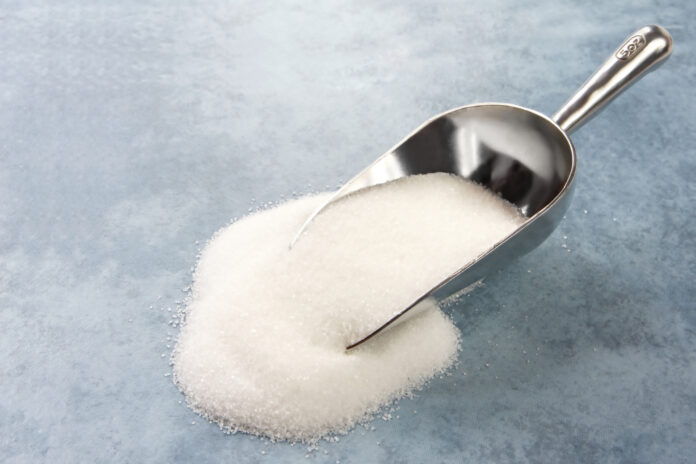Anyone who knows me knows I love staying busy. The schedule I keep at my office starts about nine in the morning and usually doesn’t end until after midnight. A busy schedule like this doesn’t include time for leisurely lunches – and skipping lunch isn’t a healthy option. Like many in today’s fast paced world, I’m in constant search of the perfect brown bag lunch that tastes good while providing enough energy to last throughout the day.
I started scrutinizing how much sugar was in my food when I noticed that the different foods I was eating influenced the amount of energy I had to take me through the rest of the day. When I realized that even the smallest amount of sugar consumed in my healthy lunch decreased my energy, I thought about all the little ghosts and goblins collecting mountains of sugary treats on Halloween. And it was time to share my research.
Energy in the form of sugars is a complex thing. Most authorities assume that sugar was the primary fuel for powering bodies, yet sugar is very complex and potentially dangerous. It appears to me that it was most likely a secondary system with fat metabolism having been the primary system. Most likely, sugar burning came into play as a more primary source of energy after climate changes forced us to store large amounts of body fat to survive harsh winters when food was scarce. Nowadays, we don’t starve during the winter. Yet, we usually eat as if to store body fat, especially in the fall. Since this fat is also the mechanism for storing toxins, toxic fat is harder to access and burn. The body doesn’t want to re-release stored poisons back into the system.
All fruits contain a combination of glucose and fructose in addition to vitamins and minerals. The group of simple sugars (Monosaccharides) includes glucose (dextrose), fructose (levulose), and galactose. Glucose is used by every cell in the body for energy while fructose goes to the liver where it turns into fats for storage. When this fat is able to be accessed for fuel, it turns into ketones the same way coconut oil fuels the cells without the use of insulin.
In order to utilize glucose for energy, cells need insulin from the pancreas to open up the cells to allow the glucose in. The more glucose, or sugar in the blood, the more insulin is needed to open the cells. The pancreas of a diabetic does not produce enough insulin get the proper amount of sugar into their cells to keep them operating correctly. Therefore, they must obtain glucose from an outside source.
Research is available which shows how excess sugar consumption leads to obesity and many chronic diseases, including cancers and diabetes. Many health authorities, including Dr. Russell Blaylock, contend that sugar directly fuels cancer cell growth. For these reasons, it is unfortunate that many people do not realize that sugar is so dangerous.
The sugar that creates the most problems is fructose. The positive side of fructose in its natural form is that it saved our ancestors from starving when food was scarce. It also helped keep them warm by providing insulating fat. On the negative side, fructose goes straight to the liver and produces unhealthy belly fat. Its mechanism turns off leptin, the hormone in fat that acts as a feedback loop to say we are full and that we should stop eating. This process was researched by Dr. Robert Lustig, Professor of Pediatrics in the division of Endocrinology at the University of California, San Francisco.
Dr. Lustig found that when fructose goes to the liver, it turns into a type of cholesterol, called VLDL, and blood fats, called triglycerides. VLDL (very low density lipoprotein) is actually a form of cholesterol that you should pay attention to because it is associated with an increased risk of high blood pressure and stroke. Fructose also elevates uric acid (which is very important as this is what can cause Gout), decreases nitric oxide, and causes smooth muscle cells to contract, increases angiotensin which also constricts blood vessels, further raises blood pressure, and can lead to ED in men (may also affect women’s responsiveness), and damage the kidneys. All of this leads to low level inflammation and chronically inflamed blood vessels which can lead to heart attack, stroke, chronic inflammatory cancers, and metabolic syndrome.
Indicators of high uric acid levels can be found through a simple blood test, yet I hardly ever see it when I review blood tests. It should run 3.5 to 5. Ask for that test as part of your next blood panel.
Fructose is added to processed foods because it’s approximately 20% cheaper than other sugars when used as a sweetener. Like all other refined sugars, this fructose has been stripped of the naturally occurring minerals and enzymes. When you eat refined sugars, your body must steal minerals from other parts of the body. This is why you might experience soreness after consuming these sugars. The lack of minerals is the reason most people overeat without their body saying it has had enough. The cellular memory system recalls binge eating that involves real food but not with refined foods so the process gets repeated. Raw honey is the food exception when it comes to fructose due to what is called the fructose paradox.
Since most processed foods are laced with altered sugars of various types, and chemically manufactured artificial sweeteners, it is difficult to avoid these sugars. Fruits in their natural form may be consumed in moderation because they include fiber and naturally occurring minerals. Fruits are not meant to be juiced as that removes the fiber that helps handle the sugar in the digestive system. However, they can be liquefied in high end blenders.











